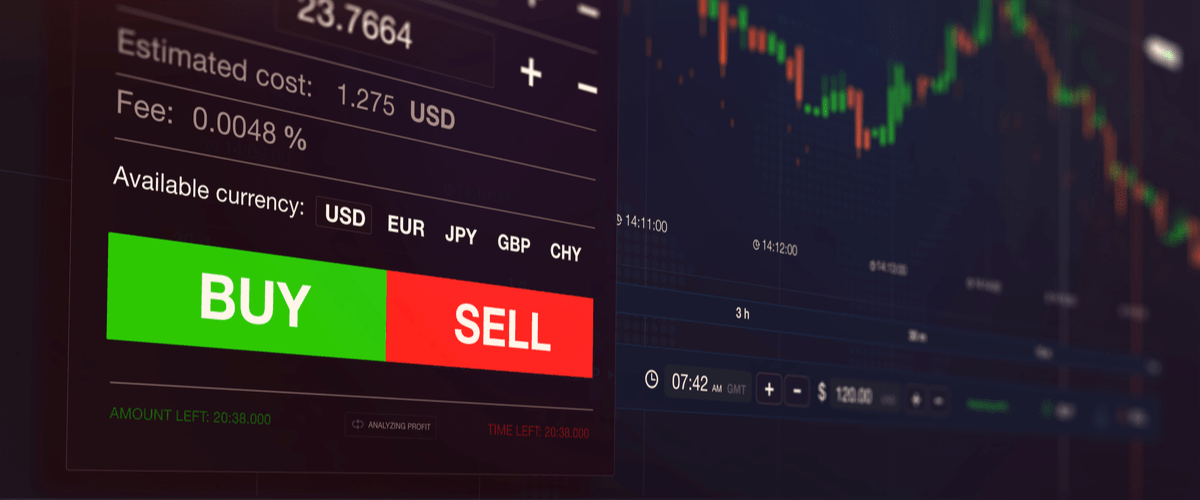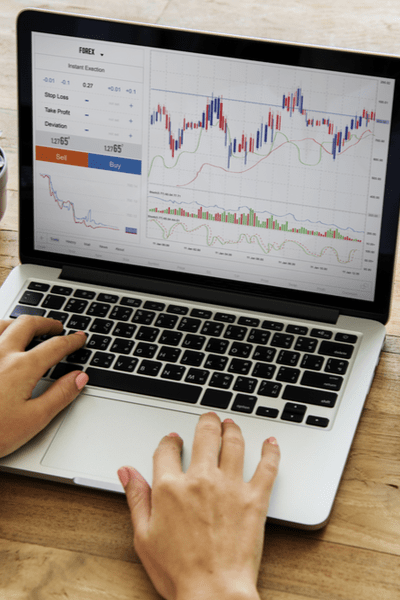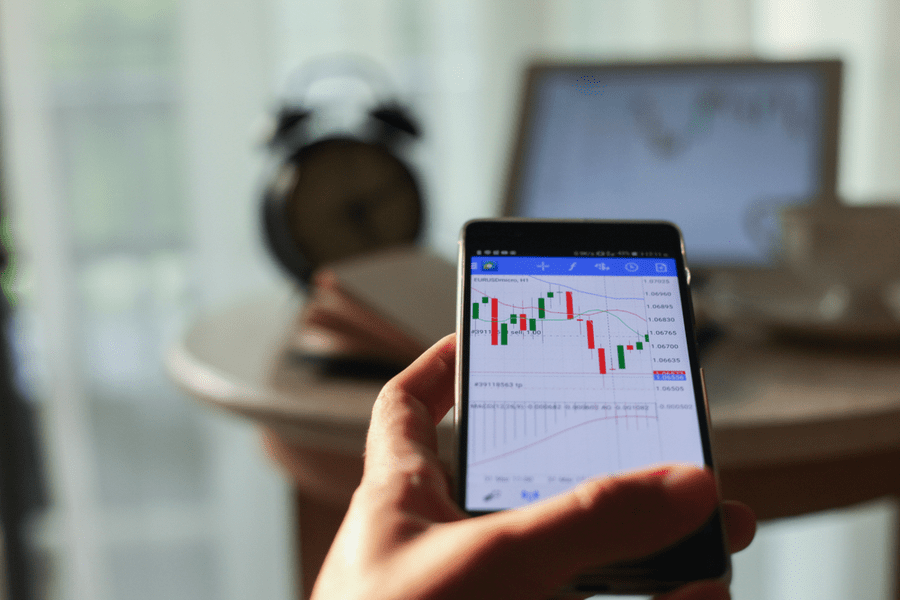
Profit with Forex, what is realistic?
Many new investors today choose the advantages of Forex . In theory, it does not seem difficult to earn (a lot of) money with it. But how does this work in practice? Is it possible to be profitable with Forex in practice? In other words: can I earn money with Forex? And if so, what should I take into account?
Not sure what Forex is? Read our article: ‘ What is Forex ‘ first.
In themselves, these are of course very relevant questions. If it were not realistic to make profits with Forex, then trading in Forex would be a lot less interesting, in fact, in the long term no one would invest in Forex anymore. So Forex trading can indeed be profitable.
Whether Forex is profitable depends on many factors. Every trader is different and looks at the market with a different vision. The way you trade Forex makes a big difference to your potential to make a profit.
Whether Forex is a solution for you also depends on your ultimate goals. If you like to trade Forex full-time, then you can actually make a job of it. You will then have to earn enough to maintain your life decently. The Forex trader who only sees it as an extra bit of pocket money, on the other hand, is less dependent on Forex and may have less lofty goals.
So you have a lot of factors in your own hands. There is no clear answer to the question of whether you can earn money with Forex. Below we will explain point by point how profit works with Forex trading and what the associated risks are. Then we will discuss the factors that influence your return and how you can adjust them. Finally, we will answer the question of how to determine a realistic profit expectation. Relevant tips will be discussed along the way.
Are the ‘Forex experiences’ of other traders realistic?
On the internet you have probably read Forex experiences of other Forex traders. The story is that one starts with a very small amount and then manages to collect millions of capital (in a short time). Although it is theoretically possible, it is perhaps wise to take such stories with a grain of salt. After all, on the internet it is easy to claim all sorts of things, without it being verifiable for the reader. So don’t let yourself be fooled .
There is something else you need to take into account in practice. For example, for many people it is realistic to earn hundreds to thousands of euros per day. How is this possible? These people usually have a very high balance on their Forex account, which allows them to enter with a much higher deposit. This is made clear in the following example:
- Laura has €100,000 in Forex. On any given day, she makes 1% profit. This 1% equals €1000 profit, in 1 day.
- Pieter has €100 in Forex. On the same random day he makes 60% profit. This 60% is equal to €60, in 1 day.
In this example, Pieter makes a percentage of 60 times more profit than Laura, and yet he earns less in euros. This is because Laura simply has more money at her disposal. What should you take away from this? Set profit targets based on how much money you have at your disposal. It is of course realistic to build up a Forex account over time. There are enough traders who deposit a fixed amount each month for Forex trading. You can adjust your strategy over time, as your Forex account grows.

See Forex profit in percentages
It is very possible to create an income as a Forex trader. If you have not been involved in Forex for very long, it is wise to set your goals in percentages instead of a specific amount . If you aim for an exact amount, this will often be difficult to achieve and it also creates emotional pressure. If you can make a profit in percentage terms with €100, you can also do this with 1 million euros. Larger profits will then automatically follow in the long term, because you build up a larger amount in your account. Think of the above comparison between Laura and Pieter.
Even if you express your profit in a percentage, it is important not to set unrealistic goals. Always realize that even 0.1% profit is profit. Because many people make losses with Forex, it is important to start by making a structural profit, regardless of the size of your profit.
If you want to maintain consistency within the trading process, it is a good idea to create a trading plan . A solid strategy ensures that you color within the lines and do not make random decisions. Here too, it is important to approach profit in percentages. This way you can estimate whether a certain trade is worth it.
In practice, the (rough) rule of thumb is that you should not invest more than 1% for a potential return of more than 2%. If you like a lot of risk and have gained a lot of experience, you could consider investing 5 to 10%. This way you maximize your profit. However, these are particularly risky trades where you really need to know what you are doing.
The interesting thing about a percentage approach is that you will automatically earn more over time. In other words; by increasing your account value you will earn more, even if your return in percentage is the same. Think back to the example with Laura and Pieter. 1% can be either €1000 or €100, while both traders have in fact performed equally well. This also has to do with the principle called compound interest .
Take the risks into account
Investing naturally involves risks. For example, in theory it is possible to lose your entire investment. However, this applies even more to Forex trading. Trading in Forex can be quite risky in practice. The currency market is by far the largest financial market in the world. It has a daily trading volume of more than 5 trillion dollars. In addition, one can trade in the currency market 24 hours a day. You could therefore rightly say that the currency market is particularly accessible and liquid.
Even though Forex trading is accessible, it does involve a lot of risks. Due to the high liquidity , prices can change a lot within a very short period of time. In jargon, it is then said that the prices ‘fluctuate’ strongly and that they are very ‘volatile’. This volatility offers perspective, but it also involves risk. When there is a chance of profit, there is also a chance of loss. An annoying side effect is that it is sometimes possible that your losses within a position can increase to such an extent that it exceeds your starting amount. This is an effect that occurs when you trade with leverage . This is often done on the basis of CFD trading . How do you cover these risks?

Risk management is key
In theory it is very simple. If you want to make a structural profit, you need to have control over the amount of risk you take. When you are concerned with limiting risks, you are in the territory of risk management.
Most successful traders determine in advance what they will invest per trade. A safe limit is, for example, a maximum of 2% per trade. This way you will have enough money left if the position turns out to be a disaster. As you gain experience, it is quite possible to adjust this percentage to your own preference. However, it is important that you do not overestimate yourself as a beginner. In practice, the highest percentages of investment are found with the traders who make the least profit. The larger profits come from consistently investing a small percentage.
Determining profit and learning curve
Earlier we briefly discussed that there is no clear answer to the question of how much return you can expect. It will depend on the amount of risk you want to take, your experience, starting amount and time spent. As mentioned, your trading strategy can also make a big difference.
These factors will be determined by most traders based on a predetermined profit target. This, while the other way around would be more logical. It is therefore wise to take a sober view. Do you choose a risk profile because it suits you or because it is necessary to achieve your profit target? The reason why you trade will then play a role. Someone who trades in Forex to put ‘bread on the table’, so to speak, will feel more urgency than someone who does it for some extra pocket money. In short, there is a demonstrable connection between profit targets and trading style .
Although many factors play a role, it is possible to come up with more concrete figures. Many Forex traders aim for a monthly return of around 5%. However, this does not mean that all Forex traders use this 5%. The most important thing is that you have an achievable profit target. With a bit of luck, anyone can make a 5% profit in a month, but can you do it consistently? Later you will read more about realistic returns per experience level.
Earlier we briefly discussed that you should not overestimate yourself. You should take your own learning curve into account. Based on how advanced you are, you can determine a risk/profit ratio . In English, this is also called the ‘reward to risk ratio’. The intention of this is to maximize profits and minimize losses. If you close 5 positions in the minus and 1 in the plus, for example; then it is possible that you have made a net profit. This is only the case if your losses are limited and your profit exceeds this.
The percentage figure that indicates how many trades you close with profit is not relevant. It is the amount of profit or loss in euros per trade that matters.
A professional trader is always looking for a relationship in which the risks are minimal and the potential is maximal . Some experienced traders take excessive risks, but they will usually be able to substantiate why they consider this responsible. As a novice trader, it is not advisable to take more risk than necessary. By trading consistently with as little risk as possible, you will learn to trade Forex as well as possible. Also read our article: ‘ Learn Forex trading ‘.
You can also reduce risks by setting so-called ‘stop-loss’ and ‘take profit’ points. A stop-loss is a price level at which you immediately close the position with a loss. The take profit is a price level at which you immediately close the position with a profit. For example, by setting the stop-loss 10% below the current price and the take profit 20% above the current price, you are using a profit/loss ratio of 2:1.
Experience levels
Your strategy will need to grow with your experience level. This way you don’t take excessive risks and you accept the learning curve. Below you will find 3 experience levels with corresponding return expectations.
1. Profit expectation | Little to no experience in Forex
To get straight to the point: it is not realistic for a novice trader to make a structural profit with Forex. If it had been that easy, everyone would have been a Forex trader by now. Please note: you can certainly make a profit as a novice trader, but not structurally .
When you are just starting out with Forex trading, you should be eager to learn. Ask yourself how things work and why they work that way. Try to learn from experienced traders and read up on them. Nowadays, many brokers allow you to create a demo account. This allows you to trade with fictitious money. This way, you can try out some trades in peace.
Try not to bet large amounts of real money in the beginning. With Forex trading you can lose a lot of money in a short time. Of course you want to avoid this.
If you accept that you have a lot to learn and show your full commitment, it will pay off in the long run. Read up well as a Forex beginner .
2. Profit Expectation | Extensive Experience in Forex
Do you know the basics of how Forex trading works, but you don’t know what works best for you? Then you can qualify yourself as a Forex trader with experience. Because you already know what the risks are and you are familiar with the principles, an average Forex profit is better to give.
At this stage it is realistic to aim for around 4 to 5% Forex profit per month. However, this is not a guarantee, as a large majority makes a loss. Again, keep in mind that you are not focusing on amounts, but on percentages. It is important to remain eager to learn. The world, and with it the Forex market, continues to develop on a daily basis.
3. Profit Expectation | Lots of Experience, Professional Forex Trader
Do you have a rock-solid strategy that works well on a sustainable basis? Then you could call yourself a professional Forex trader. Your strategy has been tested and refined many times and you are certain that you can consistently make a profit with it. This is actually the phase in which you can start looking more at concrete amounts in euros, instead of percentages.
Due to the large amount of experience, it is justified to see Forex as a job. You can then look specifically at how much money you need and how you can get it together. In this way, you will be able to provide for your own livelihood with Forex, so that Forex becomes your actual job.
It is relevant to mention that Forex trading always remains risky, even for the professional trader. It is therefore wise to have sufficient capital with which you can absorb poorly performing positions. It is almost impossible to achieve the same returns every month. The Forex market is too dynamic for a watertight degree of consistency. The consistency will therefore have to come from your side.

Adapt your strategy to your goals
If you have a clear idea of what you want to achieve with Forex trading, you can determine a strategy. This strategy will be different for everyone. Do you want to earn some extra income but remain employed, for example? Then you could opt for a short-term strategy in which you open many (extremely) small positions. This way you spread the risks, while still being able to make a profit. Forex trading has the potential to generate (much) more profit than other forms of trading and investing. However, this does come with a higher risk. So determine whether Forex is the solution for you.
Practical tips for consistent profits
The importance of consistency has already been mentioned a few times above. If you want to make consistent profits, you also need to be consistent in your trading strategy. You definitely want to limit random actions, because they are more like gambling. Below you will find some practical tips that have added value in the area of successful Forex trading:
- Choose a strategy that fits your needs. Don’t just look at the profit potential. A strategy that is personally unachievable will do little good.
- Don’t let your ultimate profit goal guide your concrete trading decisions. It is better to act wisely without achieving your profit goal than to act hopelessly to achieve your profit goal.
- Make sure your strategy is sufficiently concrete and strict. Set clear conditions regarding the opening and closing of positions.
- Test your strategy with a demo account where you can trade with fictitious money. Ask others for feedback if necessary.
- Don’t just look at which currency interests you. Look at the reward-to-risk ratio. In the end, it’s all about making a profit.
- Control your emotions and do not act on them. It is wise to switch off your emotions when you act, whenever possible.
- Focus on quality, not quantity. It is unnecessary to open a lot of positions. It is better to focus on a handful of quality positions. (This can be a strategy, however).
- Record your wins and losses and keep track of what can be improved in your strategy. This forces you to have insight into your trading method.
- Don’t be afraid to adjust your strategy where necessary. A strategy that doesn’t work or works poorly is not worth the effort. This will cost too much money in the long run.
- Stay eager to learn, no matter how much profit you make. Development and consistency are the two keys to success in the Forex market. For many professional traders, Forex is more than ‘just’ an income; it is a hobby.
Becoming a Successful Forex Trader? Choose a Good Broker.
Successful Forex trading starts with choosing a suitable broker. A suitable broker fits well with your trading strategy and does not charge too much for this strategy. Compareallbrokers.com is happy to help you choose your perfect broker, easily compare Forex brokers with our comparator.
Our reading tips
for the novice investor
